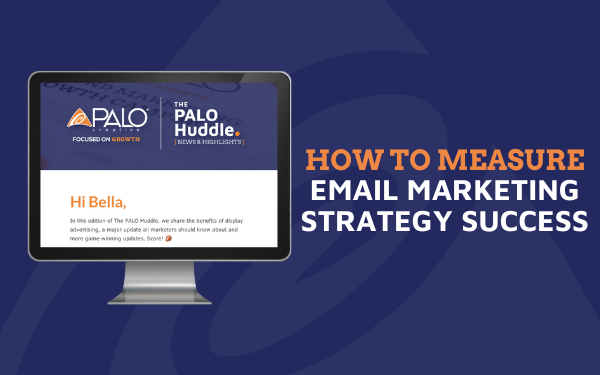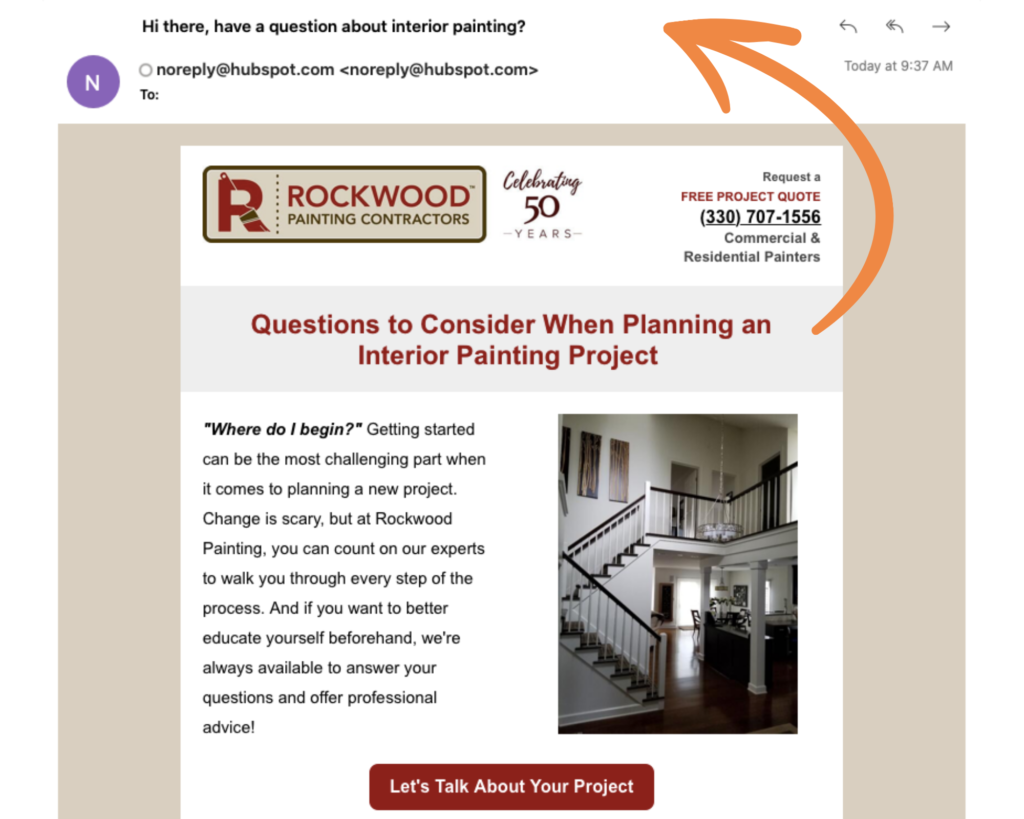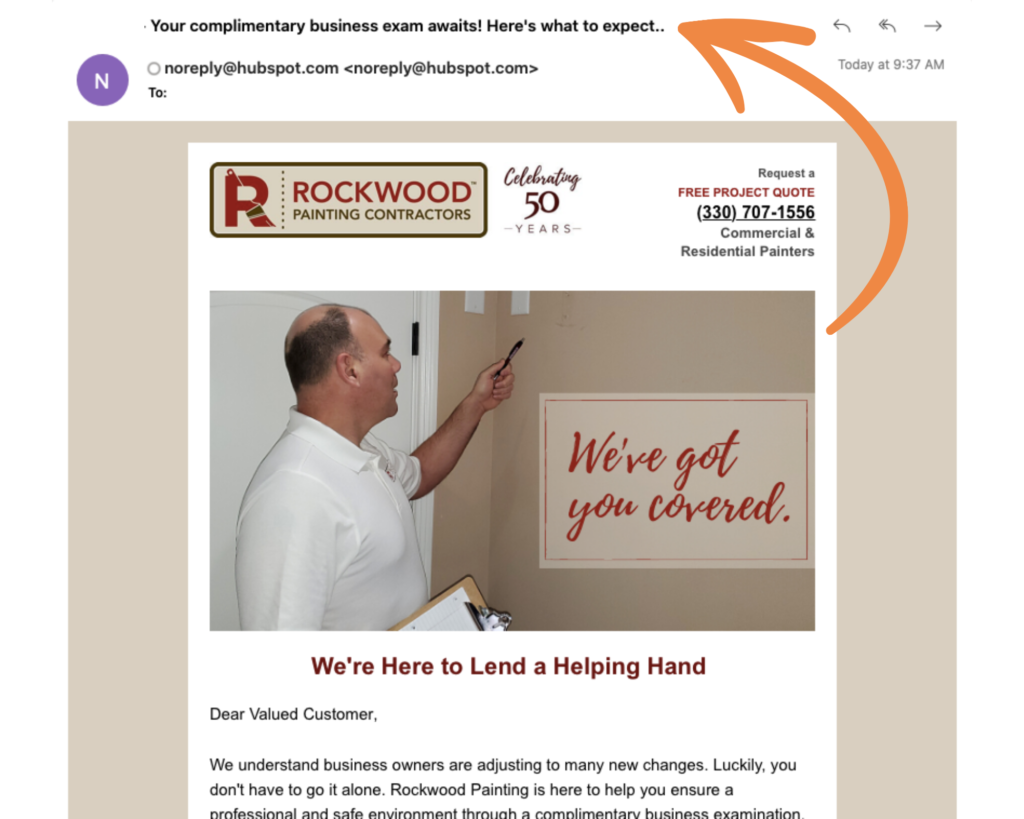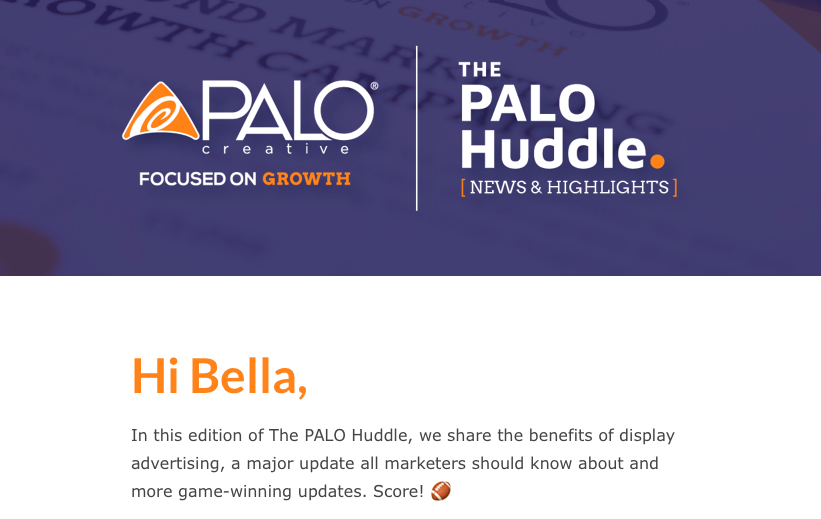How to Measure Email Marketing Strategy Success [Factors to Consider]

Did you know that the average office worker receives about 121 emails a day? With such a large volume of emails coming to their inboxes, how can you be sure to craft an email that will break through the clutter? The best way to do this is by building an email marketing strategy that is supported by research and test it with your own audience.
Email marketing can be used to accomplish a number of goals, the most common being to build relationships, promote your products or services, boost brand awareness and to generate and nurture leads.
Email Marketing Metrics to Track
So, how do you accurately measure the success of your email marketing strategy? Benchmarking metrics like open rate, click-through rate and conversion rate will provide all the useful information you’re looking for.
1. Open Rate
Open rate is the percentage of your email recipients who have opened your email. You can measure it by dividing the total number of opens by the number of emails that have been delivered. The first goal of any email marketing strategy should be to have your target audience open your email, not let it collect dust in their inbox or delete it as soon as they see it. Common reasons users may delete an email before opening it are if it appears to be spam, if they’re being sent emails too often or if they don’t remember even signing up for them in the first place.
When constructing an email, make sure it looks clean and professional. Ensure that the subject line and meta-description clearly convey what the email is about so that the recipient can decide whether they can obtain any value from your message. The clearer and more enticing you are with your descriptions, the more likely it is that your intended user will open your message.
2. Click-through Rate
Once your emails have been sent and opened by your recipients, take a look at the click-through rate. This metric measures the percentage of people who clicked a link in your email out of those who’ve opened it. Click-through rates are important because the primary goal of your email marketing strategy should be to get your email recipients to take action and click a link or multiple links in the same email.
Recipients opening your links indicates that they find your content valuable. If you notice a high click rate on a specific topic, consider doing a Part 2 or follow-up email to provide additional resources and information.
3. Conversion Rates
Conversion rate is the percentage of your email recipients who completed your call to action. Whether they’re filling out a form or purchasing a product, it’s essential to keep track of the leads who turn into customers.
Factors Affecting These Metrics
The success of these metrics doesn’t just rely on chance; a lot of it depends on actions you’re taking (or not taking). While there are a handful of factors that can determine the success of your email campaigns, the most common are the topic you’re covering, the subject line of the message and the time of day you’re sending your emails.
4. Topic Choice
In order to get anyone to open and read your email, they’ve got to be interested in what you have to say. When crafting any strategy, a key factor is thinking about who the strategy is being geared toward. Before composing and sending an email, make sure the topic you’re writing about is going to be of interest to your audience.
Your topic should also be relevant to your products, services, business and industry. If you’re a painting contractor, sending an irrelevant email about a topic like the best restaurants in your area is not going to make much sense, and it’ll likely confuse and disinterest your audience. Conduct an audience analysis to decide which topics would attract and delight your email recipients.
5. Subject Line
So, how can recipients tell if what you have to say is something they want to hear? The subject line of your email is one way to grab, or lose, a reader’s interest. The purpose of the subject line is to give recipients an idea of what they should expect to read within the email. Subject lines should also be relevant and make sense for the topic you’re covering. Avoid writing fluffy and misleading subject lines just to grab attention. Readers will be frustrated if they click on your email expecting one thing from your subject line and see that the email is about an entirely different topic than promised.
Your subject line can still grab recipients’ attention without being misleading. Try to write subject lines that are effective, eye-catching and informative, so that recipients know exactly what your email is about and are enticed to read it.


For example, our client Rockwood Painting Contractors uses specific and enticing phrasing in their subject lines. The message includes a warm greeting, as well as a clear idea of exactly what you will read in the email newsletter. This is a more inviting way to get recipients to open an email.
Using emojis and personalization in your subject lines can also be used to create increased interest. According to HubSpot’s Email Marketing Guide, subject-line emojis accounted for increased open rates for 56% of brands. Personalization also adds a feeling of intimacy in building meaningful relationships with your email subscribers. Consider creating this feeling of closeness by using a greeting in the subject line such as “Hey [First name]! Check out this exclusive offer!” Follow up with this personalization in your email body copy as well.

In our newsletter, The PALO Huddle, we aim to build a relationship with our email recipients by addressing them directly and sharing valuable, bite-sized pieces of our marketing content and resources. If you’d like to receive these useful tips from our industry experts, subscribe to The PALO Huddle at the top of this page.
6. Time of Day
Lastly, the time of day the email is sent will also affect your open, click-through and conversion rates. The best time for you to send an email to ensure high rates will largely depend on the location and lifestyles of your audience, and that time will differ for everyone. If your audience is composed of mostly professionals who are working a 9-5, catching them early in the morning might be more effective than sending them an email at 4 PM. If your audience is mostly across the sea in a different continent, you’ll need to make sure that you’re scheduling emails according to their time zone. To find the best time to send emails to ensure high success measurements, try sending out 5-10 of your upcoming emails at different times during the day, and see which one performs the best.
Consider factors like these when crafting your email marketing strategy to ensure that the important information and resources you’re producing are being delivered to a highly engaged and interested audience. If you’re going to spend loads of time crafting smart messaging and captivating content, you want it in the hands of those who will find it valuable and useful. Creating the perfect email marketing strategy will take time, testing and researching. You’ll have to be willing to experiment with different ideas and styles to see what works best for your business and what’s most appealing to your audience. By keeping track of your benchmark stats now, you’ll have better insight to prepare and adapt to creating successful email campaigns in the future.
Learn more about measuring the success of your email marketing strategy in Episode 20 of the Gameplan for Growth show.
Our Recent Posts
Search
Posts by Tag
- Digital Marketing (77)
- Marketing Strategy (69)
- Agency (55)
- Content Marketing (31)
- Social Media Marketing (29)
- SEO (28)
- News (26)
- Advertising (24)
- Website Design (15)
- branding (14)
- Graphic Design (10)
- AI (4)
- HubSpot (2)
- Web Development (2)
- Business (1)
- Marketing Strategies (1)
- Mobile & Web (1)
- PR (1)
- Professional Development (1)
- SEM (1)
- Sales and Marketing (1)
Explore our suite of services and how they can enhance your business. Contact us today to learn more!
